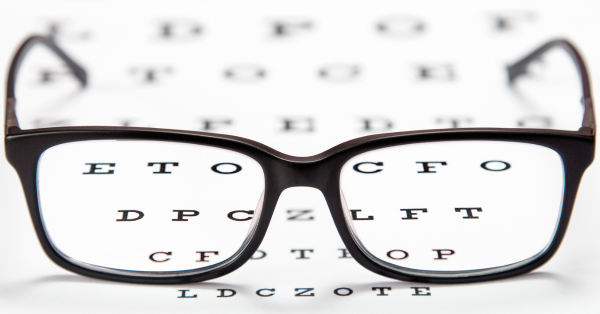The eyes are windows to the soul. If not well nourished or protected, they can be easily injured, causing them to malfunction.
The Immune System and Eye Conditions
The eyes are very sentitive organs. In response to foreign substances or allergies, they alert the body immediately with signs such as redness, swelling, tearing, or itchiness. Tears secreted by the eyes contain the enzyme lysozyme, which kills bacteria. This is made possible with the support of the immune system.
A functioning immune system helps the eyes to prevent many diseases. A weak or malfunctioning immune system makes it easy for bacteria, viruses, microbes, mold, or other invaders to enter the body and cause inflammation and discomfort, including Sjögren’s syndrome, keratitis, styes, and trachoma.
Sjögren’s syndrome is an autoimmune disease identified by its two most common symptoms-dry eyes and dry mouth. Postmenopausal women are at higher risk of suffering from it. Keratitis (inflammation of the cornea) is mostly caused by bacterial or viral infections, and weakened immunity increases the risk of infection. Poor immunity due to fatigue or excessive stress can easily lead to styes. These are painful lumps on the inside or outside of the eyelid that are usually caused by bacterial infections. Trachoma is a bacterial infection that affects the eyes. It is contagious and is the cause of blindness for about 8 million people worldwide.


Development of Eye Conditions Is Associated with Dietary Habits
Increasingly, research is revealing that there are strong links between the development of eye conditions and unhealthy dietary habits. Unhealthy food intake can even worsen such diseases or cause complications.
Processed, low-fiber foods and foods high in sugar can raise blood sugar levels quickly, causing the body to produce high levels of insulin. For example, excessive consumption of highly refined, starchy foods causes insulin levels to rise easily. In addition, diets high in fat and calories are linked to excessive weight that decreases insulin sensitivity, causing the body to require more insulin to bring down blood glucose levels. An increase of insulin causes insulin-binding protein-3 to decrease, which can lead to unregulated increase of axial length (the length of the eyeball from front to back), worsening or even causing myopia.
Cataract risk is strongly influenced by dietary habits. Higher total fat intake has been found to be associated with increased cataract risk. Studies have revealed that high intakes of linoleic acid omega-6 fatty acid) may increase the risk of age-related cataracts. Diets high in trans fats (found in margarines and shortenings) and monounsaturated fat are associated with higher risk of early nuclear cataracts. Intake of mayonnaise and creamy salad dressings, both rich in linoleic acid, has been linked to cataracts in women.
Cheese, milk products, beef, pork, and lamb are among foods associated with increased cataract risk. Lactose is a sugar found in milk and dairy products. The enzyme lactase breaks down lactose into glucose and galactose. Most people have low levels of lactase after infancy. However, even for adults with high levels of lactase, high milk consumption can still present problems because it may contribute to high levels of galactose absorption. From time to time, galactose may not be readily broken down. Over time, galactitol, a metabolic byproduct of galactose, can accumulate in the lens, which may contribute to cataract formation.
People with low or inadequate intakes of fruits and vegetables and those with low levels of antioxidants in the blood have been found to have higher cataract risk. Researchers found that cataract patients had low levels of vitamin C.
Diet also affects risk of diabetic retinopathy. Binge eating and diets high in sugar, fat, calories, and processed food can lead to diabetíc retinopathy. High-risk groups include older adults, particularly those who are obese, have high levels of body fat, or have larger waistlines.


Common Eye Conditions and Their Causes
Eye health deteriorates with age. However, there are many factors that can cause damage to the eyes and lead to eye conditions such as myopia and cataracts. In addition, the ages at which people are suffering from many eye conditions are decreasing. Taking action to prevent, diagnose, and treat eye conditions helps prevent the eyes from aging prematurely and ensure their continued good health.
Myopia
The lens of the eye bends (refracts) light to reach the back surface (retina) of the eye. Myopia can be caused by excessive refraction by the lens, or longer axial length. This refraction causes distant objects to appear blurry while nearby objects are clear. The more severe the myopia, the shorter the distance at which things can be seen clearly. Besides affecting sight, myopia may lead to complications such as retinal detachment, eye floaters, glaucoma, cataracts, blindness, and other eye problems.
Heredity is a major risk factor for myopia. Pathologic myopia, for example, is largely inherited and progresses regardless of environmental factors. Research has shown that children with two myopic parents were 6.42 times as likely to become myopic as children with one or no myopic parents. The modern lifestyle, which includes unhealthy habits such as spending long hours watching television or using a computer or smartphone, is also a major contributor to the rapid increase of people suffering from myopia.
Myopia has been on the rise in North America and Europe for the past few decades. Currently, around one third of U.S. adults are myopic. Myopia has reached epidemic proportions in Asia. In cast Asian locations such as China, Taiwan, Hong Kong, Japan, and South Korea, 80%-90% of school-leavers are myopic. Of that myopic population, 10%-20% of these myopia sufferers have severe myopia.
It is possible for people of all ages to develop myopia. However, children are especially susceptible because their eyes are in the developing stages and are vulnerable to abnormalities in eye growth. While most cases of myopia are permanent, some myopia is temporary. Pseudomyopia is myopia that occurs after long periods of near work such as watching television, reading, and using the computer. Nocturnal myopia occurs in low light. Induced myopia occurs due to medication. Research has also shown that a shortage of time spent outdoors is associated with a higher risk of myopia. Thus, in addition to heredity, environmental factors also contribute to myopia risk.
Cataracts
The lens of the eye mostly consists of water and protein. The protein is arranged such that the lens is kept clear to let light pass through. With age, some protein may clump, clouding part of the lens and forming a cataract, which may get larger over time. The lens thus loses its transparency, causing vision to be blurred.
Cataracts may also refer to a discoloration of the lens, usually to a yellowish or brownish color that causes vision be tinted. Cataracts can occur in one or both eyes, but they cannot spread from one eye to the other. They are the main cause of impaired vision worldwide. Women are more likely to suffer from cataracts.
In addition to dietary factors, old age (especially for those aged above 50), a family history of cataracts, long-term corticosteroid usage, smoking, myopia, eye injuries, overexposure to sunlight. diabetes, hypertension, and obesity increase cataract risk.
Computer Vision Syndrome
Around 75% of people who use computers at work have computer vision syndrome (CVS). CVS may be caused by improper viewing distances, poor sitting postures, and glare from computer screens. Common symptoms include fatigued eye muscles and aching in parts of the body such as the neck. Because the eyes and head share some sensory nerves, CVS can also include headaches. Other symptoms of CVS include fatigue, blurred vision, red eyes, eyestrain, dry eyes, stinging eyes, and double vision.


Eye Conditions May Be Warning Signs from Other Organs
Some eye conditions arise due to problems with other organs, such as the heart and liver. In fact, they may be symptoms of other diseases.
According to Chinese medical theory, a healthy liver helps to ensure healthy sight. An unhealthy liver lowers the body’s ability to clear toxins. When toxin levels in the blood rise, free radicals attack and damage the macular region and healthy tissues in the retina. This leads to acquired night blindness, cataracts, and age-related macular degeneration (AMD). The WHO ranks AMD as the third major cause of blindness worldwide and the number one cause of blindness in industrialized countries.
Sight is closely related to heart health. For example, enlarged capillaries in the eyes are a warning sign of death from heart disease. Those suffering from retinal diseases may have a higher risk of dying from cardiovascular disease compared to the average person. High blood pressure and heart disease can cause optic nerve stroke and AMD. Complications related to diseases like diabetes, such as diabetic retinopathy, can lead to retinal damage and impaired vision.
To improve your eyesight, check out on this website >> Nuewee Organic Blackcurrant Protein with Astaxanthin to know more information.

